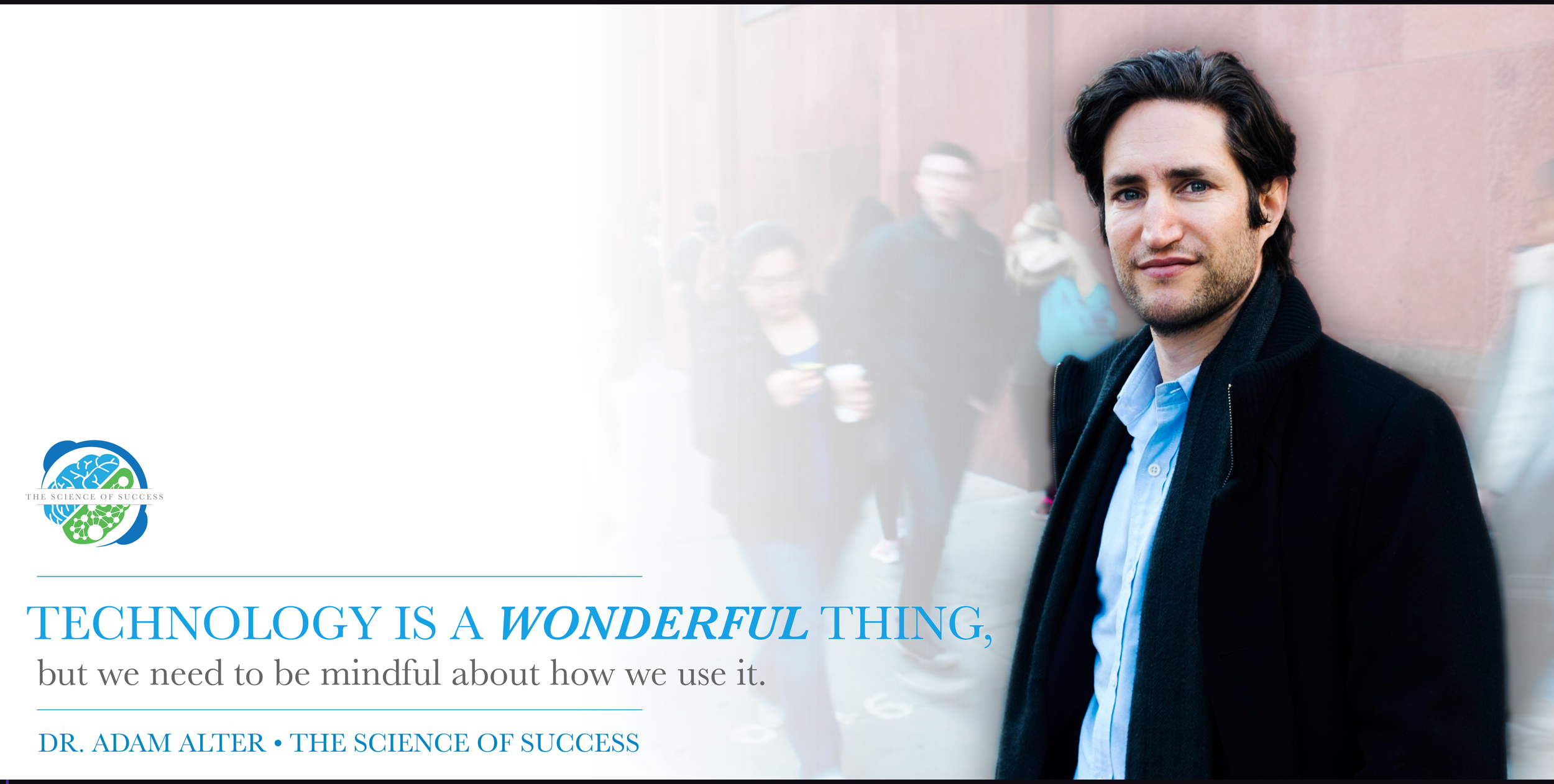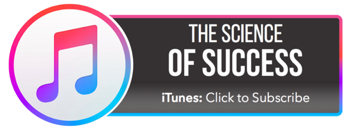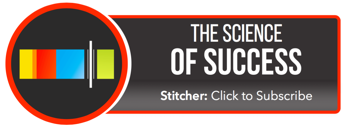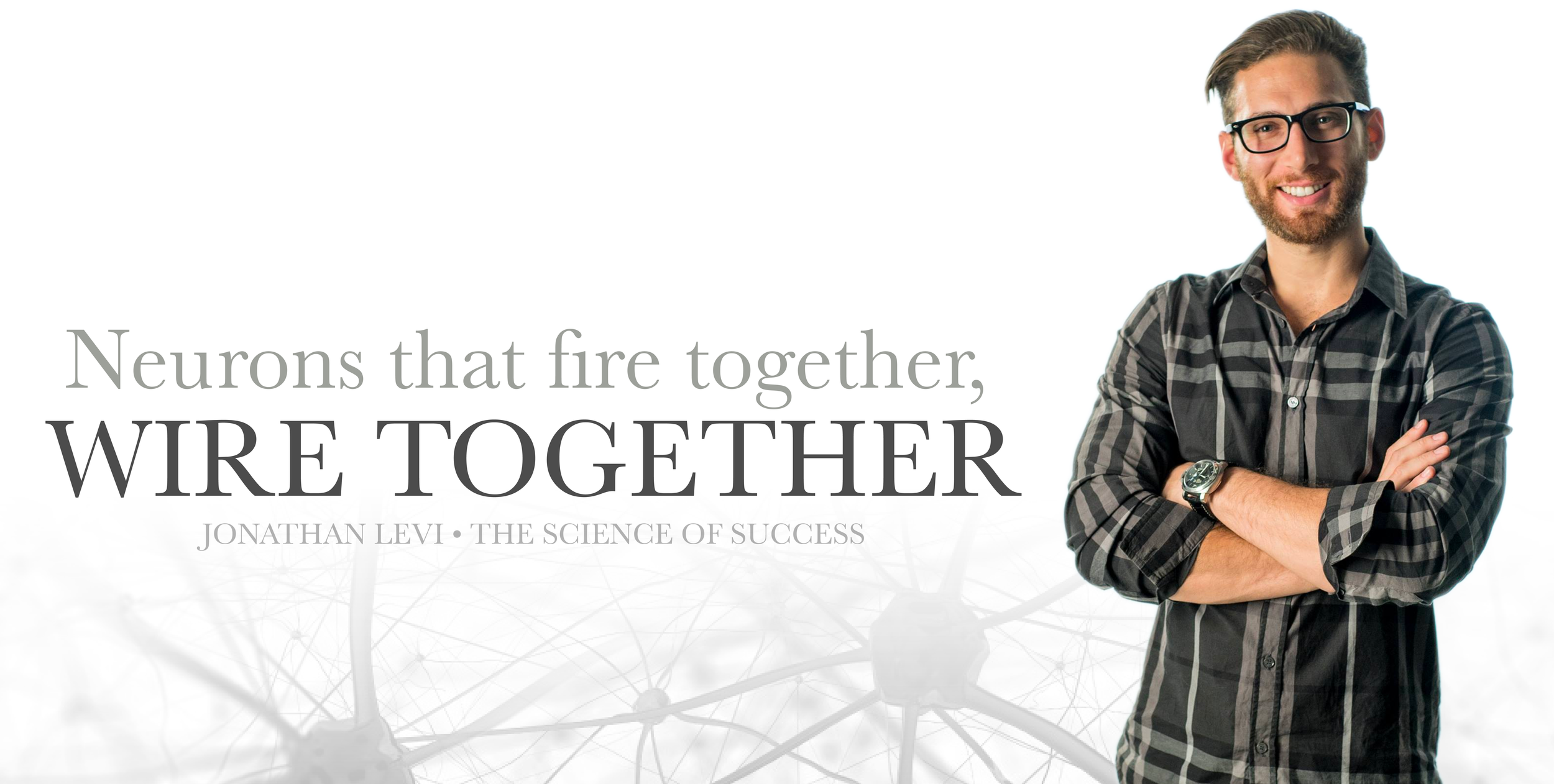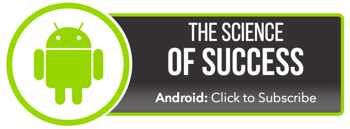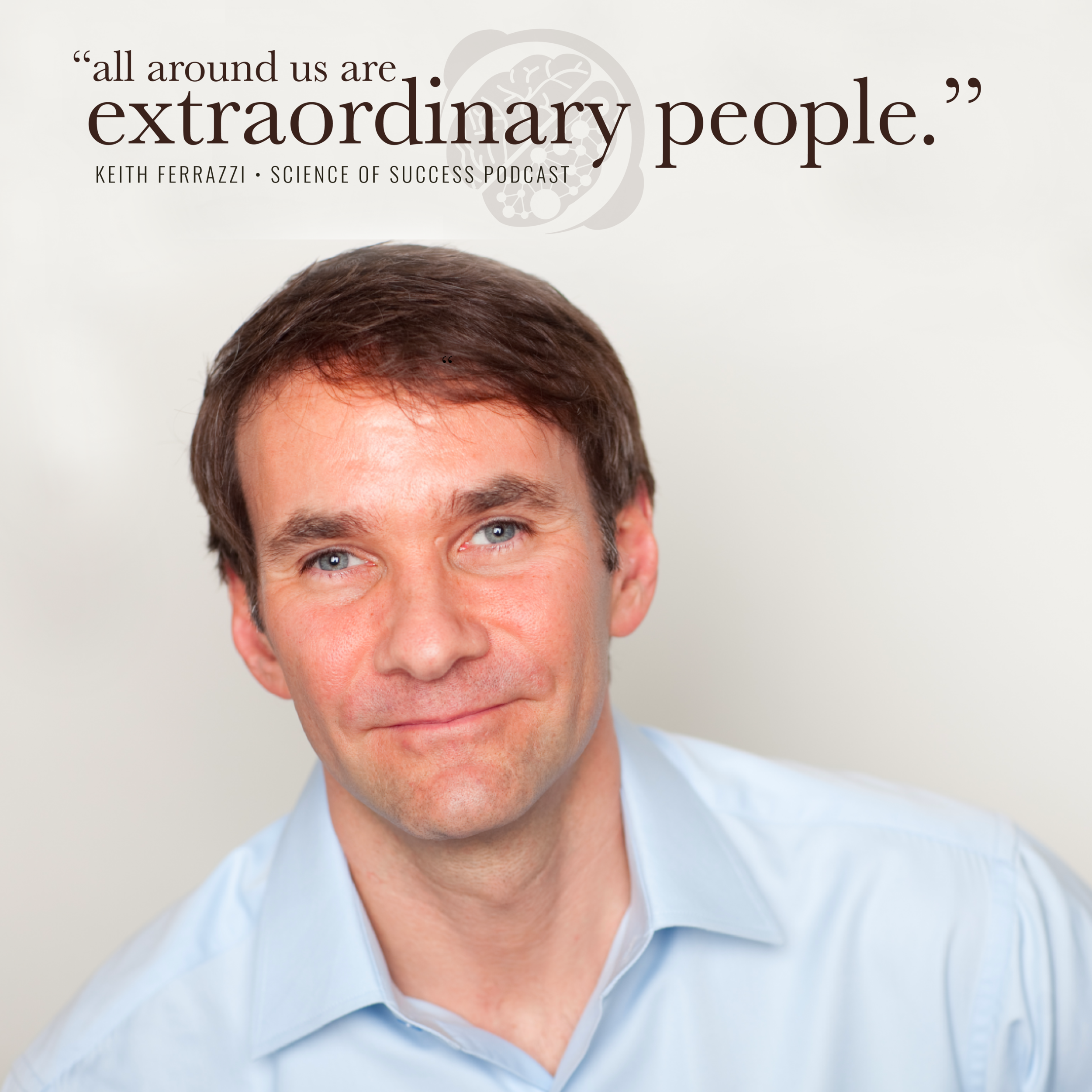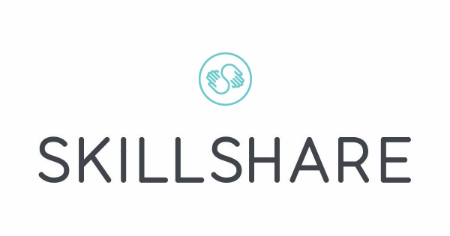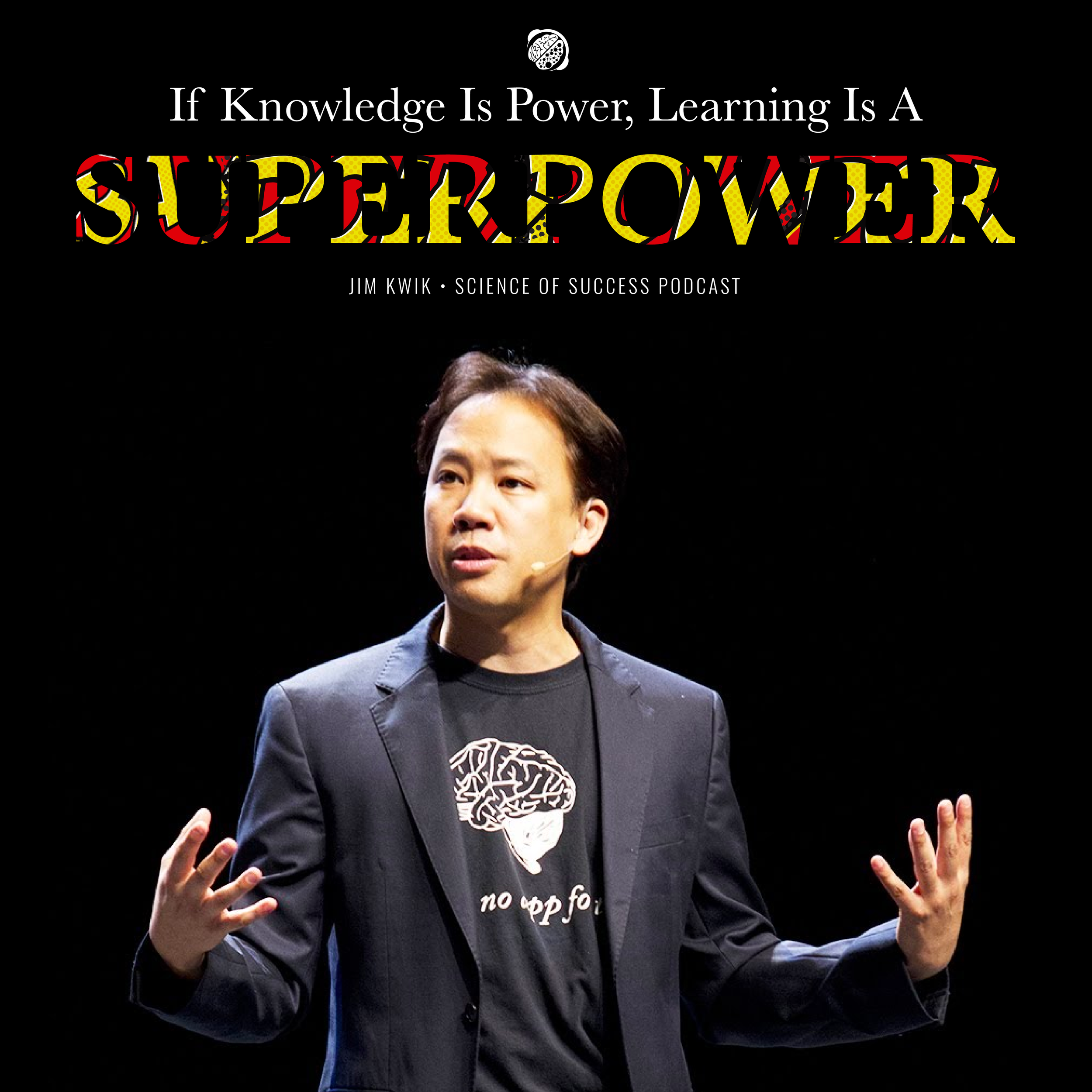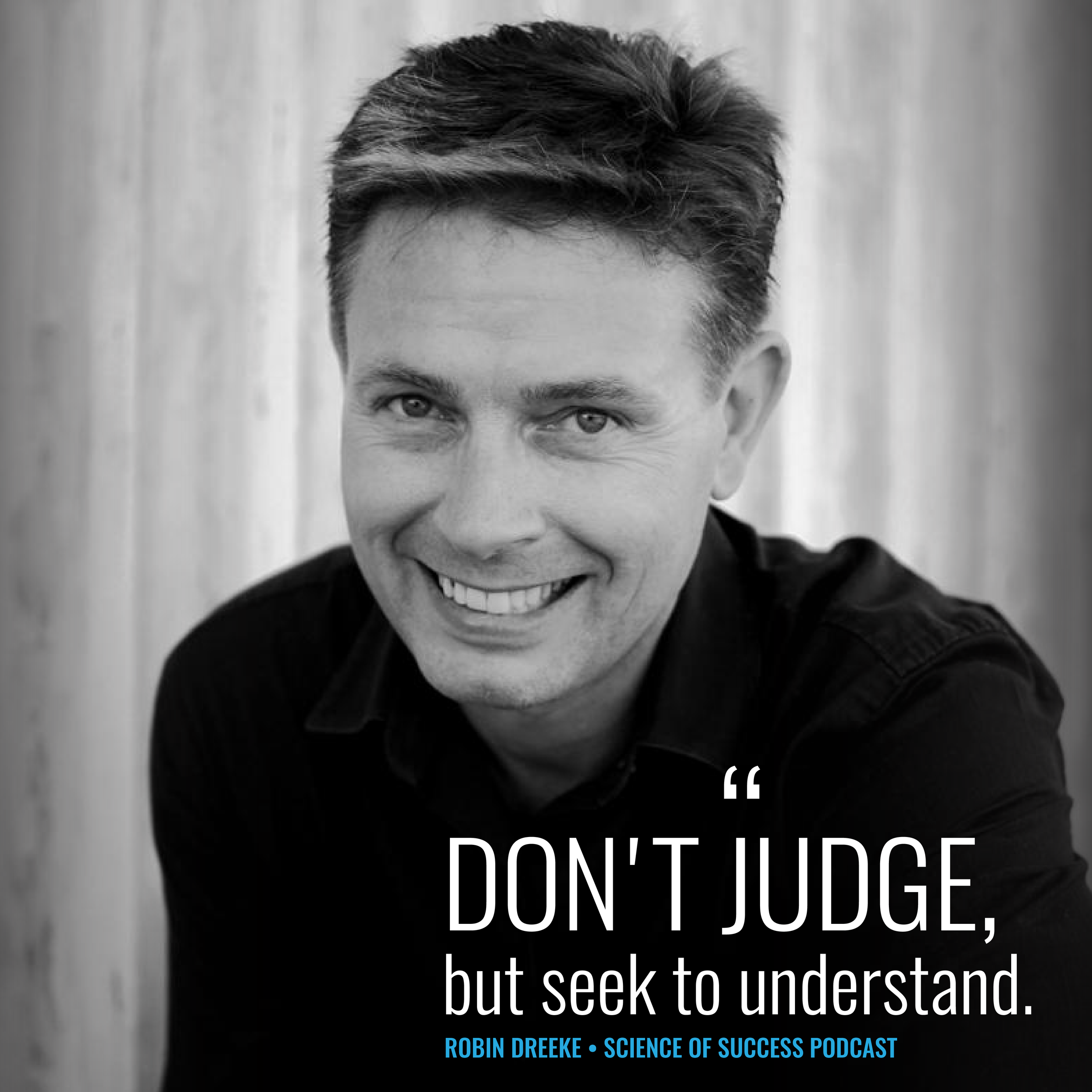Four Questions That Will Change Your World - An Exploration of “The Work” with Byron Katie
In this episode, we take a journey into the inquiry know as “The Work’ and uncover the 4 question framework that you can use to break down negative thoughts and limiting beliefs. We examine what happens when we argue with reality, look at the difference between being right and being free, explore the causes of suffering, and much more with our guest Byron Katie.
Byron Katie is an American speaker, author, and founder of the method of self-inquiry known as “The Work”. She has worked with millions of individuals at both private and public events in prisons, hospitals, treatment centers, universities, and schools. She is the author of three bestselling books and her work has been featured in TIME, The Huffington Post, Oprah, and much more!
What happens when you don’t accept reality?
Do you like it when you scrape your knee?
How should you deal with negative experience?
Missing the miracle of life by arguing with it
What happens when we get caught up in having to be right?
Why it’s painful to “believe your own thoughts” and why you should question your own thinking
The Four Questions of “The Work” that can allow you to challenge your negative thoughts and limiting beliefs
Using the “Four Questions” to meditate on and reflect on challenges in your life
How to become a better listener, listening is powerful
When you argue with someone else, you miss valuable information and become disconnected with that person
We are often looking outside for the answers to our questions - we should instead look inside
The only way to change the world is to question what you believe about the world?
How to be open and fearless
What you think that causes your suffering - it's only what you’re thinking and believing that causes your suffering
Test it for yourself
What we think and believe create our identities
What you THINK causes your suffering - it's not the external world. The events of the
People don’t need to change - what you think and believe about them could use some work
Be aware of your life right here, right now - the value and the gift of life and how to take care of it.
The Four Questions of the Work and how you can apply each of them
Is it true?
Can I absolutely know that it’s true?
Who am I when I believe this to be true?
Who would I be without this thought?
Turnaround
You can never change others but you can always change yourself
Thank you so much for listening!
Please SUBSCRIBE and LEAVE US A REVIEW on iTunes! (Click here for instructions on how to do that).
This week's Mindset Monday is brought to you by a product we've been personally using and are LOVING - Ample K!
Have you been looking to take your diet to the next level using superfoods and science backed research? Have you ever wanted to learn more about Ketosis? Perhaps you've tried the "Keto" diet but find it impossible to eat the same foods each day and are looking for something quick, tasty, and easy?
Ample K is the first all-in-one keto meal to provide sufficient healthy fats in a powdered, mix-on-the-go format! Their formula includes 10x more probiotics than a serving of yogurt and over four types of fiber to promote a healthy gut! If you're a long time fan of the show you know how important gut health is for mental health as well!
For a limited time Ample is offering our listeners 15% off their first order of Ample! That's an incredible value and it's only for Science of Success listeners! Just click here and use the promo code "SUCCESS15" at checkout to claim your 15% off discount on your first order.
We use it, we love it, you will too.
This weeks episode is brought to you by our partners at Skillshare!
For a limited time, Skillshare is offering our listeners TWO MONTHS OF UNLIMITED CLASSES for only $0.99! That's UNLIMITED classes for two months for only $0.99. Go to www.skillshare.com/success to redeem this incredible offer NOW!
Skillshare is an online learning platform with over 18,000 classes in design, business, technology, and more. Whether you’re trying to deepen your professional skill-set, start a side hustle, or just explore something new, Skillshare will keep you learning in 2018 and beyond.
Again, Skillshare is offering our listeners the incredible deal of two whole months of UNLIMITED classes for only $0.99 so get out there and start learning at www.skillshare.com/success
SHOW NOTES, LINKS, & RESEARCH
[Website] The Work
[Book] Loving What Is: Four Questions That Can Change Your Life by Byron Katie and Stephen Mitchell
[Instagram] Byron Katie
[Facebook] The Work of Byron Katie
[Blog] The Work of Byron Katie
Episode Transcript
[00:00:06.4] ANNOUNCER: Welcome to The Science of Success introducing your host, Matt Bodnar. [0:00:11.9] MB: Welcome to The Science of Success, the number one evidence-based growth podcast on the internet with more than a million downloads and listeners in over a hundred countries. In this episode we take a journey into the inquiry, known as The Work, and uncover the four-question framework that you can use to break down negative thoughts and limiting beliefs. We examine what happens when we argue with reality. Look at the difference between being right and being free. Explore the causes of suffering, and much more with our guest, Byron Katie. I’m going to give you three reasons why you should join our email list today by going to successpodcast.com and signing up right on the homepage. First, you’re going to get an awesome free guide that we created based on listener demand. This is our most popular guide, it’s called How to Organize and Remember Everything. You can get it completely for free along with another surprise bonus guide when you sign up and join the email list today. There're some amazing stuff that's only available to your email subscribers, so be sure you sign up and join. The next thing you're going to get, you’re going to get curated weekly email from us every single Monday called Mindset Monday, short, simple articles and stories that we've loved or enjoyed over the last week. Listeners have been loving that email. We get a ton of positive feedback on it, and if you're on the email list, you're going to get it every Monday. Lastly, you’re going to get an exclusive chance to shape the show. You can vote on guess. You can help us change parts of the show, like our interim music. You can even submit your own questions to guests that we often ask during the interview, and you can enter into special listener only giveaways that we do very frequently for our email list. So be sure to sign up, join the email list today. You can do that by going to successpodcast.com and signing up right on the homepage, or if you're out and about, if you’re driving around, if you're on the go, just text the word “smarter”. That's “smarter” to the number 44222. Text “smarter" to 44222 to sign up and join the email list today. In our previous episode we discussed the danger of getting addicted to your screens. We looked at how technology is designed to be as addictive as possible and how those addictions specifically make you spend more time on things like social media and news that make you less happy. We discussed how screens rob us of time and attention and why it's so hard to break away from them. We also looked at how you can structure your environment to spend more time away from your phone and create ways to get out of these addictive behavior loops with our guest, Adam Alter. If you want to know the real dangers that Silicon Valley insiders have been trying to hide from you about using technology, listen to that episode. Now, before we dig into the show I want to kind of to tell you about two things. One; I really want to note the audio quality of this episode. We had some audio issues, partly my fault. I had my mic set on the wrong setting, so it sounds pretty bad. I'll be honest with you. But I think there's value in this interview and I still wanted to share it with you. That's completely my fault for botching the audio on my end. We also had some issues with Katie, as she is known, her audio and some background noise, but we soldiered through it and I just wanted to give you kind of full transparency about the audio of this episode so that you know going into it that the audio quality is not our best. The second thing, I wanted to tell you a little bit about Byron Katie's work and sort of what she does and what she works on to give you some context going in this conversation, because we really kind of jumped into things in medias res, and I want to make sure that you have the right tools and the right context to understand what's going on and what we’re talking about. The Work, as it's called, is a method of inquiry. It's essentially a series of questions that you can use to break down negative thoughts and limiting beliefs and it's a framework that I’ve personally used many, many times. It's really impactful and really powerful and it's a simple four-question framework. The first question you ask yourself, and then then there's what she calls at turnaround at the end of that. The first question is; when you have a limiting belief or a negative thought, let's say, “I'm not good enough,” or “I can't sell,” or “That person doesn't like me,” etc. We’ll use I can't sell as this example. So the first question you have to ask yourself with the inquiry is, ”Is this true?” and I'll give you the four questions and then we'll go briefly into them and then we'll talk to Katie. So the first question is, “Is this true?” and that's kind of your gut reaction. The second question is, “Can I absolutely know that this is true?” That's a much deeper question. It's really hard to absolutely know really anything, and in many ways our perception of reality is often very skewed and limited and kind of low resolution, to borrow a phrase. The third question is, “Who do I become, or who am I when I believe that thought to be true?” When you're going through these questions, often the best thing to do is to kind of take some time, journal about this belief or this limiting belief or this negative thought and spend some time on each of these questions. So who do I become when I believe that thought to be true? Then the last question is, “Who would I be without that thought?” and this is an opportunity to create an image of your life, your experiences without that negative belief. Then finally, you have what she calls, what Katie calls a turnaround, and this is essentially a new belief or a new thought or sort of a reverse of the negative thought that you had before. So if your belief was, “I can't sell,” for example. You’d start with, “Is that true?” and your gut reaction might be, “Yes. It's true. I'm never been successful at sales.” Then the question, “Can I absolutely know that that's true?” Well, absolutely knowing that something is true is very different then thinking that it might be true. So do you absolutely know for a certain that you're not good at sales? Can you prove that scientifically, or is that just been your experience so far? Would it be possible that maybe with some changes in your behavior or the right coaching or the right strategies or a change in your mindset that you could be good at sales? Is it possible that other people that have a similar personality or background have succeeded at some point in the past at selling? It's definitely possible, and so it's much harder to know absolutely if that's a true belief or not. The third thing; start to look at what is your life look like when you believe you can't sell or when you believe that negative belief really create a vivid scenario how much suffering, how many problems? What does it cost? What does that stop you from achieving and doing? And then working with that last question, “Who would I be without this belief.” Who would you be without the belief that you couldn't sell? You would be out there hustling, making your dreams come true, achieving the things you want to happen, being successful, building your life. Again, sales is just an example. You can do this with any limiting belief, but that's a really simple one and a lot of people have the belief. So it's a good example. Then the turnaround of that would be something as simple as, “I'm an amazing salesperson.” So that's kind of an example of the four questions. Now we’re going to segue into the interview. I just wanted to give you a little bit of context, because, again, we kind of jumped in right in the middle of things, and I wanted you to know what the four questions are, what a turnaround is and how that all feeds into this conversation with Katie. I also wanted to point out briefly that this episode, much like occasional episodes we do, like Robert Thurman and others, is less grounded in science and research, but, again, I think this framework is really powerful and impactful. Certainly made a big impact on my life, and so I still found it valuable to share it with you. So, now for the episode. Remember, the audio quality, not the best. I apologize profusely for that. But I still think there is value in this conversation, and so I wanted to share it with you today. [0:07:51.0] MB: Today we have another amazing guest on the show, Byron Katie. Katie, as she’s affectionately called, is an American speaker, author and founder of the method of self-inquiry known as The Work. She's worked with millions of individuals at both private and public events, at prisons, hospitals, treatment centers, universities and schools. She's the author of three bestselling book and her work has been featured in Time, The Huffington Post, Oprah and much more. Katie, welcome to The Science of Science. [0:08:16.2] BK: Thank you, Matt. Thank you for having me on. [0:08:19.5] MB: Well, we’re very excited to have you on here today. So I’d love to start out with and really kind of explore some of the fundamental premises of The Work. Starting out, and this is something that I think about a lot. We talked a lot about in the show, is what happens when people argue with reality or don’t accept things kind of as they are? [0:08:43.2] BK: Well, it’s like war breaks out in those moments. If I believe — For me, I’ll just talk about myself and my own experience. If I fall down and scraped my knee, to me, it’s like some kind of amazing, awesome experience, because it’s not about me scraping my knee. It’s about the experience of actually noticing what I tripped on. Noticing the falling in real-time, and it’s like in slow motion even though it appears to other people as happening quickly. Then scraping my knee is an experience. As I understand after years of inquiry, that all pain is either remembered or anticipated. I get to be in that experience and I don’t miss it and it would be — I have experience of falling down, like — I don’t know, maybe 50 steps, and in that slow motion, because I’m not anticipating where I’m going to land or where I’ve been. It’s like I don’t miss the miracle of life, and all these years I cannot find anything to argue with. Now, if I fall down prior to me discovering this inquiry in myself, if I would argue with someone, I had to be right. And I say one thing, they say something else that contradicts it, then I have to argue my point. But today I say something, let’s say my husband says something else, an entirely different point of view, I have some something to contemplate, because more often than not, people are right. Even if they’re not, it gives me another point of view. It gets me in touch with who they are. There’s so much there that I could go on and on and on about that people are here to educate me, not the other way around. So I love listening and thinking for myself, because ourselves are all we’re ever going to deal with. [0:11:09.1] MB: There’s a lot of different things that I want to unpack from that. Let’s start with the concept of having to be right. For someone who’s not familiar with you and your work, what happens on why do people get caught up in having to be right? [0:11:24.8] BK: It’s ego-based. It forms our identity, and if I can hang on to what I believe, then I am right, and that is always an I-ego that’s right, that there’s an argument. But if someone has another point of view, even if it directly contradicts mine, even if they’re appear to even be angry in it, am I listening beyond what I’m believing about their anger? Am I listening? Am I open? Am I growing and expanding this mind of mine? Is it something I haven’t considered before? I just don’t have to be right. I’d rather be free. We get stuck in that. If someone says, for example, “Katie, you’re wrong,” then my response would be, “I haven’t even considered that.” Maybe I might say that or I might just cut to the chase and say, “Tell me more. Tell me where I’m wrong.” So now I have my point of view and I have someone else’s point of view that can move me forward and even more with a mind that’s even more open and educated. Why do people get caught up and having to be right? Because we’re believing our thoughts. But what if we questioned what we were believing? If we have an open mind, that’s where the freedom lies. Moving out of a stuck place and to a place that is more informed, a more enlightened point of view and free, free to grow. [0:13:17.1] MB: I think that’s a great point. I want to dig in and circle back. Can you share again and just talk briefly about sort of the importance of each of the different questions and sort of the four questions of the work? We’ve talked a lot and had some examples of about how you can apply it in a context. But just for listeners who want to have sort of each of them as a tool that they can use, will you share each of the questions and sort of how that question functions and works? [0:13:42.3] BK: Yes. Is what I’m believing true? Now, the ego will take that inquiry over if we don’t write — Read through it as a one liner, like he doesn’t care about me. If I don’t write it down, and I have a worksheet for that on [inaudible 0:14:01.5].com. It’s always free, of course. I write it down. So there it is, my thoughts on paper. Another way of saying that is my mind is stopped. It may be running radically in my head, but that portion I want to question is written down and it’s clear. So he doesn’t care about me. There it is in writing. Okay. Now the mind is going to try to shift all over the place and I’m going to keep coming back to what I’ve written. Just simple assumption, and the mind would say, “No. It’s true.” So I won’t call it assumption here. Just a concept, judgment. So he doesn’t care about me. So I want to know for myself if that’s true, if what I’m believing about him is true. I want to know, because a person can say, “I care about you,” and we don’t believe them anyway. Sometimes we do, sometimes we don’, but we don’t necessarily believe them anyway when they say, “I do like you.” So I’m questioning, he doesn’t care about me. So it is true? So now I’m going to contemplate that and I’m going to anchor on that situation, last night at that social event, where I was standing, where he was standing, I’m going to contemplate as I witness that situation again in my mind. So I’m going to anchor there, he doesn’t care about me. Is it true? And I’m going to witness and I’m going to listen, and I’m not going to — If it’s a yes, it’s true. If I’ve really witnessed that, and that’s what I come up with, then that’s my answer. If I come up with a no and I’ve really witnessed the situation from last night again and in my mind’s eye. As I meditate on that moment, if I come up with a no, then that’s my answer. Then the next question I would move to, there are only four questions, is, “Can I absolutely know that it’s true he doesn’t care about me?” And I’m going to contemplate that. If the answer was no, I just move on to three. If the answer was yes, I’m going to give it some more time, and I absolutely know that it’s true, he doesn’t care about me. Now I’m not going to guess just no, because the word absolutely is there. I’m going to really meditate on that moment in time until I’m listening. So my answer can still be yes. That’s okay too. I’m going to continue with the next question and notice how I react, notice in my mind’s eye witnessing last night’s event, that situation in my mind’s eye now as I sit this morning meditating on that moment in time how I reacted when I believed the thought, how it felt, what I said, what I did. I’m going to silently witness how I reacted last night. I’m going to be shown in my mind’s eye this morning witnessing how I reacted when I believed the thought he doesn’t care about me. I’m going to witness it this morning in real-time, then I’m going to be shown, and a lot of emotions come up. So I can see how I reacted, and when I feel educated there, like I really am aware of how I reacted and what happened and how it felt, what I said, what I did, then I’m going to move, “Would I be in that same situation if I didn’t believe the thought he doesn’t care about me?” Really, I’m just taking that PostIt off of him and I’m witnessing him and I’m witnessing me and I’m listening to what he said [inaudible 0:18:05.6] doesn’t care about me. My mind is very open, extremely open, because I’m not at that social gathering now. I’m at home along sitting in my chair meditating in that moment in time. So I can see without the thought he doesn’t care about me. I experience clearly that when I believed the thought, that was because of my suffering. It wasn’t him. What I would be without the thought? I’m listening, I’m at ease. Who am I when I believed the thought? How do I react? Very stressed out. So is what I’m believing about him, that is the cause of my suffering. Then I turn it around, he doesn’t care about me. I don’t care about him. Then I witnessed, I continued to stay anchored in that last night event, that moment in time, he does care about me and open my mind and see if I can find any clues. I’m not going to concoct something. I’m not making nice. I’m not using positive affirmation. I really want to know and to know I have to get really still and listen and be shown what I missed last night, because my mind was so — I was so believing he doesn’t care about me. He does care about me. I’m going to sit there until I can see just try on like that new pair of shoes or boots that I’m trying on. Just witness maybe the least of all thing, he does care about. It has to be the real deal. I really got to know. When I have said in that, meditated there, I’m going to see if I can find another opposite to he doesn’t care about me. I don’t care about him. That’s an opposite. So where is it that I was uncaring last night? Now I’m going to witness again. If I was, again, anything against my most intelligent self, my wisest self, my kindest self. Those are terms for kind, true nature. It’s a match to the heart, to kindness. I don’t care about him. So I’m going to see things here in my situation. Things that I need to admit to him in our next conversation, and things I need to apologize for. I going to get that job down, because peace is another word for wise. Peace is what I’m about, because I know there’s a way from experience, and that’s my invitation, and I do this by invitation. He doesn’t care about me. I don’t care about him. Then I make that right. [inaudible 0:21:13.2] right. He doesn’t care about me. Then there’s another one; I don’t care about him. He doesn’t care about me turned around, I don’t care about him. Where is it that I was uncaring about myself in that situation? Then I witness the ways that I really did, that I really was out of order, and that’s not carrying about me. Anytime something like that shows up, it shows me I’m doing the right things sitting in this inquiry. It’s a beautiful thing, this unending circle, this love affair with the self. When one loves themselves or care about themselves we’ll see in this situation, then we begin to care about others. I don’t like me, I don’t like you. If I like me, I like you. So there’s only one person to ever work with in this world, and it’s always one self. I can’t change you. It’s difficult enough to change me, and only enlightenment changes me. I can’t pretend change. It’s going to catch up with me. It’s the truth that sets me free. To care about me, is to care about you. That’s the just 20 minutes every morning, sitting in one’s self. Just that inquiring mind. I’m great. I think Socrates said, if I’m not mistaken, an unquestioned life is not worth living, and that certainly is my experience. [0:22:59.6] MB: So just to clarify and make sure listeners understand. The example you’ve been using kind of throughout this is if you ran into somebody at a dinner party and you got the impression that they didn’t like or kind of rub you the wrong way, this is a way that you could use the questions of The Work to break down that belief and decide, is that really true, and sort of get at the root and sort of the underpinnings of your thoughts and around that and the negative emotions that you experienced bout that. [0:23:27.5] BK: Yes. Just to see what’s true and what’s not. We’re guessing, and we walk around with these minds that are just — How do we react with these thoughts running on our head. Notice the energy it takes. It brings us up. We could be living wiser, kinder lives and really taking care of what needs to be taken care of with it not being all about me. [0:23:59.0] MB: You’re probably listening to the show because you want to master new skills and abilities so that you can live a rich and rewarding life. That’s why I’m excited to tell you once again about our loyal and amazing sponsor, Skillshare. Skillshare is an online learning community with over 16,000 classes in design, business and more. You can learn everything from logo design, to social media marketing, to street photography and you get unlimited to all of these classes for a single low monthly price. So you never have to pay per class again. They have some awesome courses on there that I personally love, everything from mastering Evernote, to mind mapping, to learning how to draw, or if you want to get a leg up on graphic design, social media, even your culinary knife skills, be sure to check out Skillshare. Skillshare is offering something incredible to our listeners. Two months for just 99 cents. You can get that by going to skillshare.com/success. That’s skillshare.com/success for two months of courses for just 99 cents. Be sure to check that out. I want to tell you a funny quick story about our second sponsor for this episode, Ample K. Ample K is the first all-in-one keto meal to provide sufficient healthy fats in a powdered mix on-the-go format. In fact, Ample sent me some free samples of their product a couple of months ago and I was skeptical at first. In fact, the sample basically sat in my pantry for a month and a half and my producer, Austin, and I were joking about, “Oh, this sent us this protein shake in a bottle, blah-blah-blah. It probably tastes really bad,” and don’t really have much desire to try it. But I’m going to be completely honest with you. One day, I was out of time and I needed a protein shake, and I just grabbed a bottle, filled it with water, shook it up and started drinking it. First of all, it tasted delicious. Great taste, and the nutritional content is awesome. It has like 30 grams of protein, almost 30 grams of healthy fats. It’s only 400 calories in one of the servings and you can literally mix it up and drink it in 10 seconds. I now probably drink three or four them a week. I just ordered like a massive order with my producer, Austin, and I split it because we ordered one of the largest orders you can possibly make. I’m a huge fan, personal user of the product, and I wanted to share that story with you, but they’re offering something special for listeners of the show. Anybody who’s listening can get 15% off of their first order of Ample, and this is exclusively for The Science of Success listeners. All you have to do is when you’re checking out at amplemeal.com, just use the promo code success15 to check out to get your 15% discount on your first order of Ample. I highly recommend checking it out if you’re looking for something simple, easy and on-the-go. I also wanted to tell you about our second sponsor for this episode, Ample K. Ample K is the first all-in-one keto meal to provide sufficient healthy fats in a powdered and mix on-the-go format. I’m a huge Ample user as well. In fact I’m having an Ample for breakfast today, and they sent us a couple of free samples. It took me forever to actually try one, and once I did I was completely hooked. There’s like 400 calories, almost 30 grams of protein. A great balance of healthy nutritious fats. It’s really exactly what you could look for in a sort of a meal, powdered meal on-the-go shake, and I have probably three or four Amples a week. Great. I just ordered along with the producer of the show, Austin, who’s also a big fan of Ample. We just ordered a huge — Like whatever the biggest boxes. We have these giant boxes of Ample just come in. I’m a huge fan of Ample as well. So I’m really excited to have them be a sponsor. For a limited time, they’re offering our listeners 15% off of your first order of Ample K. So to get this exclusive offer only for Science of Success listeners, you can go to amplemeal.com and use the promo code success15 at your check out to claim a 15% discount of your first order of Ample K. Back to the show. [0:27:56.2] MB: So tell me a little bit more about this notion of believing our thoughts. If somebody is listening to this and they’d never really kind of woken up to the fact that getting caught up in your own world and not accepting reality and believing your thoughts can cause so much pain and suffering in your life. What does that mean to believe our own thoughts? Why shouldn’t we do that? [0:28:19.1] BK: Well, we do, but it can really painful. If someone contradicts what I believe, then if I’m ego’s in play, I’m going to stay stuck and that’s going to look like argument. So after the argument, let’s say I argue with that person. I’m right, and they say, “No. I’m right. Here is why.” “Well, I’m right, and here is why.” We have that going back and forth. Later I can sit down and question it. For example, they say I was wrong. So I invite people to contemplate, and what they’re believing that causes stress and to question it. So I’m wrong that person says, and so I see them as wrong. I’m going to sit down later and I’m going to just consider that they’re wrong. That’s what I’m believing. That person is wrong in what they say. The first question, there are only four; is it true? Can I absolutely know that it’s true that that person is wrong at what they say? And I’m going to contemplate that out of my own personal experience, because that’s all I have. This is inner work. So I’m meditating on that moment in time in that argument and I’m going to anchor there in this meditation and then I’m going to contemplate and witness in my mind’s eye with my eyes closed how I reacted when I believed the thought that he’s wrong. So now I’m going to the first thing that we usually are in touch with, our feelings and emotions. So he’s wrong. How do I react when I think that thought? I can witness that moment in time and actually feel it as I see it in my mind’s eye. I’m sitting in a chair on the phone and he was so, so, so wrong. How did I react when I believed that, the emotions? So I’m going to take my time as I continue to meditate on that moment in time when I believed he was wrong. Then I’m going to witness the argument. What I said and how my voice would rise and fall and the indignation maybe, that righteous indignation of, “I know,” and I’m going to witness that very stressful moment in time. Then I’m going to move to that last question of the four and witness who would I be without the thought he’s wrong? So that allows me in real-time now to really listen and hear and contemplate what he was actually saying. So now I’m in a place where I can hear him. There’s no one to argue with, so I’m listening to his voice, the voice of then now, and now my mind is starting to open. It’s as though I’m taking that post-it off of him. Those stick post-it, he’s wrong, he’s not listening, he is stuck, he is trying to hurt my feelings, etc. Who would I be without those post-it’s that I’ve put on him in that experience? Who would I be without my story? Who would I be without the thought he’s wrong? Again, this is meditation, and it takes an open mind. A mind that would rather be free than right, and it doesn’t mean I’m not right. But where am in in opposition to anything that would confound what I believe, that’s ridiculous. It’s crazy. Everyone has a lie to what they think and believe and say, and I’m at war with another human being. So I just notice all of that. Then I find opposites. I just experience opposites, like he’s wrong with what he’s believing. I’m might turn it around to; he’s right in what he’s believing. That can feel really stunning at first, even confrontational at first, because the ego is at play here. It needs to be right to exist, to apparently exist. So he’s right in what he says. So now I have to get really still and I have to consider with an open mind, is it possible that he’s right about that? Now that taps me into a whole other world, a whole other world that I was blind to as I was defending my own identity. I am the one who knows. I’m right. So after contemplating that turnaround, that opposite, I’m wrong in what I believe. I’m wrong in what I believed to be true. Now after listening to him in this silence, hearing now what I couldn’t hear then, I could be wrong, I believed. So I have his information now that I’ve taken in, because now it’s always a safe place to listen again. So my entire mind is being shifted, and I’m ending the war with him, a disagreement with him and I’m doing nothing, but sitting in these questions and experience and what I was believing then that caused me more the disturbance and me to be so small-minded. It still doesn’t mean that I’m wrong when I said that I am wrong in what I believe. It can certainly flow over to what I pointed to earlier, I began to realize that he has a right to his opinion and I feel closer to him, because I know his internal and where he’s coming from. So I’m more connected. I’m closer. I’m more respectful when I run into this human being again, because all these post-its I had on him have dropped. I’m a better listener with everyone. I understand without having to plan it, that listening is powerful. I understand that I’m more connected when I am not overwriting another human being’s belief system. I’m more aware that when I will stay at war, arguing with someone, that I miss what they have to say. I’m missing valuable points, and it disconnects me from that person. I’m learning so much, I can go on and on and on. It becomes a way of mind. There’s nothing we cannot apply — I call it The Work. It’s inquiry. But four questions [inaudible 0:35:33.0]. And there’s nothing we cannot apply this to in our lives. It’s a way to end our own ignorance, and war is ignorance, and it would be if you imagine you at breakfast this morning, then would see you, let’s say, at your kitchen table or grabbing a piece of toast on your way out the door. Whatever it was for you. Then if you imagine yourself at dinner tonight, then you have that self of that past in your mind’s eye, that self of the future in your mind’s eye, and then the self listening now. So who are you? You know the question; who am I? It really is not a tough question. I am not that self at breakfast. That is a me in my mind’s eye and that is not me at dinner tonight. How do I know I’m not there? How do I know that’s not my self at breakfast? I’m not there. But that’s where we live. We live in past future. But what if we were just aware, and it’s not to stop these images and what we believe on to these images. That’s not the trick. The trick is to be aware. To be awake to what is reality and what is fantasy. So we can do the work that we are here to do, and it’s not a stupid way to live or ethereal thing that I’m pointing to here. It is you, that wise self that isn’t diluted or spread all over the place. If you want to little guilt, give it past. If you want a little wear and tear, get a future, or just the difference. For me, it’s not enough to just see these images. We have to question what we’re believing on to these images of past future to get free of those selves, to wake ourselves up to the self and live this selfless life and which we found a little strange to some ears. [0:38:06.5] MB: What’s one kind of short, simple piece of homework or actionable advice you could give to somebody listening so they could start implementing the work in their lives? [0:38:16.3] BK: To go to thework.com and the simple directions are there, and if you need a little help, there is a free help line on thework.com, and there are facilitators there to support you in how to fill in the worksheet. There’s also a one belief at a time worksheet. There’s also an app online. Just go to the app store, The Work, and the directions are there. I have a nine-day school for The Work coming up in March that I just can’t recommend strongly enough for people who can afford those nine days out of their lives and the money it would take to get to the school for The Work, and that’s why it’s free on thework.com for people who cannot afford those two things; the time and the money. It’s nine days of just stepping out of the world and identifying what we’re thinking and believing about sexuality and fear and terror and relationships and money and ourselves and others and — What else, James? [0:39:36.4] J: Oh! About our attendance and technology and the government. The whole world, really. [0:39:44.3] BK: Whatever we encounter in life just as a usual. It’s nine days just to sit in that with my guidance there. A lot of experience. Nine days, when we step out of those nine days, the work, this inquiry. It’s just a part of our mind. It is like everything I think ends in a question mark, and those nine days — This happens for everyone. It’s like he doesn’t care about me. Oh! He doesn’t care about me. When inquiry is alive in us, it’s like he doesn’t care about me? It’s a whole different thing. It’s like, “Oh! I did it wrong.” “Oh, I did it wrong?” It feels like that. The whole mind shift literally turns around. So, of course, my job is to make sure that people know these questions exist and that anyone with an open mind can do this. It’s stepping into another world. The world that I came from was one of more than a decade of serious depression, and my world now is — It shifted so radically, that even my children didn’t recognize me. Same body, different mind. It’s radical. [0:41:13.1] MB: Katie, where can listeners find you and The Work online? [0:41:17.7] BK: Instagram, Facebook, thework.com, byronkatie.com, and my books are on Amazon, or you can find those on thework.com as well. People can — It may sound a little strange, but they can always find me inside themselves as I, like you, Matt, we can only be no more and no less than people believe us to be. The bottom line is who do I believe me to be and who do I believe you to be? That’s the world I love. [0:41:52.5] MB: Katie, thank you so much for coming on the show, sharing all these wisdoms. The questions from The Work have been tremendously impactful in my life and really help me deal with a lot of limiting beliefs and negative thoughts. I really personally thank you for creating that framework and thank you for coming on the show and sharing your stories and experiences with our listeners. [0:42:11.0] BK: Oh! You’re so welcome, Matt. Again, thank you for your good work and for having me on. [0:42:16.1] MB: Thank you so much for listening to The Science of Success. We created the show to help you, our listeners, master evidence-based growth. I love hearing from listeners. If you want to reach out, share your story or just say hi, shoot me an email. My email is matt@successpodcast.com. That's matt@successpodcast.com. I'd love to hear from you and I read and respond to every single listener email. I'm going to give you three reasons why you should sign up for email list today by going to successpodcast.com signing up right on the homepage. There are some incredible stuff that’s only available to those on the email list, so be sure to sign up, including an exclusive curated weekly email from us called Mindset Monday, which is short, simple, filled with articles, stories, things that we found interesting and fascinating in the world of evidence-based growth in the last week. Next, you're going to get an exclusive chance to shape the show, including voting on guests, submitting your own personal questions that we’ll ask guests on air and much more. Lastly, you’re going to get a free guide we created based on listener demand, our most popular guide, which is called How to Organize and Remember Everything. You can get it completely for free along with another surprise bonus guide by signing up and joining the email list today. Again, you can do that at successpodcast.com, sign up right on the homepage, or if you're on the go, just text the word “smarter” to the number 44222. Remember, that the greatest compliment you can give us is a referral to a friend either live or online. If you enjoyed this episode, please leave us an awesome review and subscribe in iTunes because that helps boost the algorithm, that helps us move up the iTunes rankings and helps more people discover The Science of Success. Don't forget, if you want to get all the incredible information we talked about in the show, links transcripts, everything we discussed and much more, be sure to check out our show notes. You can get those at successpodcast.com. Just hit the show notes button right at the top. Thanks again, and we'll see you on the next episode of The Science of Success.







